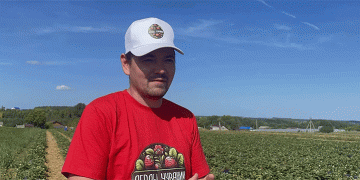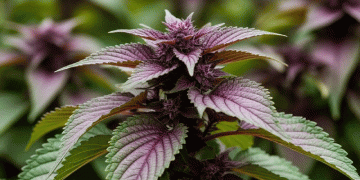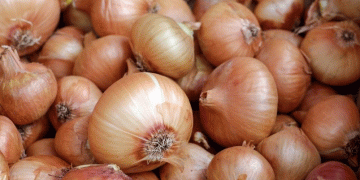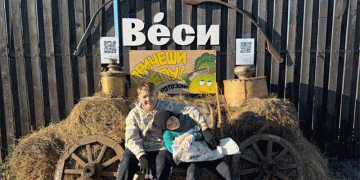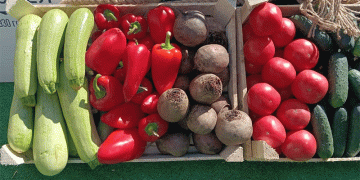Club Chef in Covington, Ky., is a member of the Castellini Group of Companies.
That’s a lot of Cs.
But there’s one more that applies when it comes to Club Chef: Consistency.
With multiple national foodservice accounts that expect the fresh-cut produce they serve up in the Midwest to be the same quality and cut as that served in its outlets in other regions of the country, it’s all about producing a consistent product, every time.
“Our job is consistency,” said Filindo Colace, vice president of operations. “We have to create something we can repeat, and repeat every day.”
Meeting customers’ needs
It starts with customers coming to Club Chef with a specific request or need, or Club Chef approaching the customers with an idea.
“We do product development for our national accounts,” said Ted Rebholz, Club Chef director of manufacturing.
Two of Club Chef’s larger-volume items, like most other fresh-cut processors, are chopped and shredded lettuce. The company also produces a large amount of diced tomatoes, cabbage for cole slaw, diced onions, shredded carrots and chopped peppers.
If a customer wants a certain blend of lettuce, Club Chef’s R&D department creates new blend options that it believes will work and collaborates with the customer to come up with the final formula.
“A customer can come to you and say, ‘I really like the lettuce, it tastes wonderful, but can you make it this shape instead of that shape or can you make it this length instead of that length?’ Colace said. “It might seem like an easy task, but when you are working on machines that are cutting thousands of pounds an hour, it’s not so easy.
“There’s a lot of trial and error involved.”
Don Hedrick, director of sales and marketing, used the example of having just completed a conference call with a customer who’s looking for a new cut of cabbage.
Customers also approach Club Chef with general ideas and hope the company can come up with something specific to fit their needs.
“Our customers often will come to us and say, ‘We’d like you to develop something different for us,’ and so we do that,” Colace said.
That might involve designing and fabricating new equipment.
“Sometimes we have to get input from our machinery suppliers, or sometimes it’s coming up with a new piece of equipment working with either a fabricator or our vendors,” Rebholz said. “It’s all about servicing the customer – giving them what they want and need.”
Fooling Mother Nature
As it happens, Club Chef’s biggest challenge is the one over which humans have the least control: Mother Nature.
“Weather, the growing environment, the growing regions – it has such an effect on the product – and shelf life,” Rebholz said.
But it all starts with the quality of the raw material.
“There are times when, if the growing conditions are optimal, we could cut a load of tomatoes and get extended shelf life,” Colace said. “Then there are times that it rains so much in the growing area, or it could be so hot for such a long period of time, and the product is grown under such stress, that those same tomatoes might only achieve the lower end of the shelf-life range.”
Club Chef has its own employees to inspect fields, agricultural practices and crops before and during harvesting. These employees also select product that meets Club Chef’s standards before shipping it to the processing facility in Covington.
“The key is to start with good raw product to end with good finished product,” Colace said.
Advancements in packaging technology have also helped extend shelf life.
“Whenever we’re experiencing any kind of problem or have a customer come to us with a request, we partner with our film supplier and they’ll work with us on the development,” Rebholz said. “They’ll make the material, we’ll bring it in, we’ll run it, we’ll do evaluations, we’ll do shelf-life studies, we’ll give them feedback and zero in on what we need.”
Club Chef sources product from all over the United States. Their leafy greens normally come from Arizona and California. On one recent day, there was lettuce from California, cabbage from the Carolinas, Michigan and Kentucky, romaine from Michigan and California and tomatoes from California, Ohio and Virginia in the house.
“We try to be as diverse as possible,” Rebholz said, “so if one growing area is having problems, we can pull from another.”
The company also produces fresh-cut fruit.
“It’s a very high quality – peeled and cut fresh every day,” Rebholz said. “We make our fruit orders daily. There are no preservatives or syrups or additives – nothing. It’s 100 percent fresh.”
Going through hundreds of thousands of gallons of water a day, Club Chef is constantly exploring ways to conserve water. The company also recycles just about every material it uses, including paper, cardboard, pallets and waste produce.
“Produce waste is brought together off the trim lines and then blown by air pressure into a semi-trailer, which is delivered each day to a dairy farm for animal feed,” Rebholz said.
The bottom line
In the end, though, it’s about making sure the product adheres to specifications and exceeds customers’ expectations. That’s why when a national account recently rolled out a new product that was using a certain cut of Club Chef lettuce, a couple of the staff went over to a nearby location to order the dish.
“We went there the first day to see how it was, because the true judge of your product is not what it is when it leaves here – it’s what it is when it gets on the consumers’ plate,” Colace said. “And that’s ultimately who we are judged by – our customer’s customer, the consumer.”


















